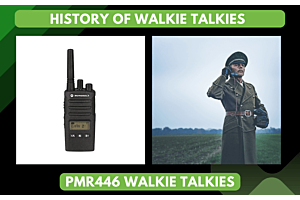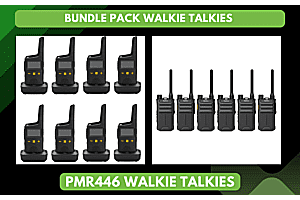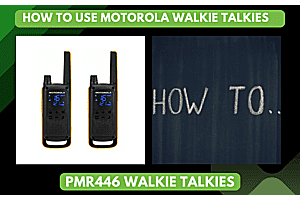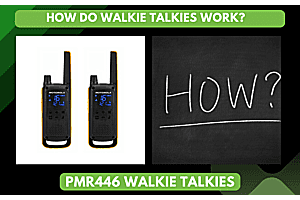
As a product which many of us use on a daily basis for work or personal use, the question we all ask is, when were walkie talkies invented?.
Walkie talkies, also known as a 'handie talkie' or handheld transceivers, are portable two-way radio communication devices. They were originally developed for military use during World War II, but have since become a vital tool for public safety, personal use, and various industries. In this article, we will explore the history of walkie talkies in the UK and their evolution from the first walkie talkie to modern two-way radio systems.
Origins and Early Development
The history of walkie talkies dates back to the early 20th century when radio engineers such as Alfred J. Gross, who was born in London in 1918, were experimenting with mobile radio communication. During World War II, the first walkie talkie was developed by a Canadian inventor named Donald L. Hings and an American radio engineer Alfred J. Gross. The original device was called a "portable radio signalling system" and was used by the military for communications in the field.
After the war, walkie talkies were adapted for civilian use, and their popularity grew quickly. One of the earliest adopters of the technology was the Galvin Manufacturing Corporation, which later became Motorola. The company's engineering team developed the first hand-held two-way radio in 1943, and in 1947, they introduced the first commercial walkie talkie. The first walkie talkies were large, heavy, and had a single radio channel.
The Evolution of Walkie Talkies
In the 1950s and 1960s, walkie talkies became smaller and more efficient, with the introduction of power supplies and the development of the first car radio. This allowed the technology to be used in police cars and other vehicles, and it became an important tool for law enforcement.
In the 1970s, walkie talkies evolved further with the introduction of digital squelch and external microphones, making them more user-friendly and efficient. The devices also became more compact and were used in a wider range of applications, such as for remote operation in industrial and military settings.
In the 1990s and early 2000s, walkie talkies were widely used in public safety and personal use, and the technology was advanced with the addition of hands-free operation and the option for an external handset. Walkie talkies were also used in the development of the first mobile phones, which were essentially two-way radios with the ability to connect to a cellular network.
Modern Walkie Talkies
Today, walkie talkies are still widely used in public safety and personal use, as well as in various industries. They have evolved into complex two-way radio systems with features like even a filter and wireless sets. Modern walkie talkies can transmit over long distances and on multiple channels, making them a versatile communication tool for a variety of settings.
In the UK, walkie talkies are used by tens of thousands of people, including emergency services, security personnel, and event organizers. They are a vital tool for public safety and can help prevent accidents and respond quickly to emergencies. In addition, many individuals use walkie talkies for personal use, such as camping and hiking, where mobile phones may not have service.
Conclusion
The history of walkie talkies in the UK has a rich and diverse history, starting from the first walkie talkie developed during World War II to modern two-way radio systems. Walkie talkies have played an important role in public safety, personal use, and various industries. They have evolved to become smaller, more efficient, and more user-friendly, and they continue to be an essential communication tool for many people in the UK and around the world.




